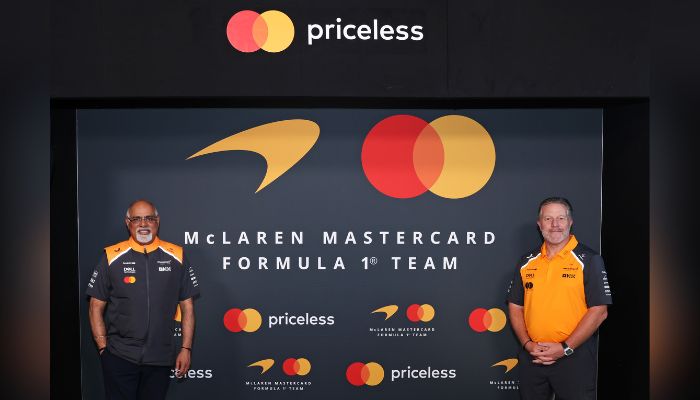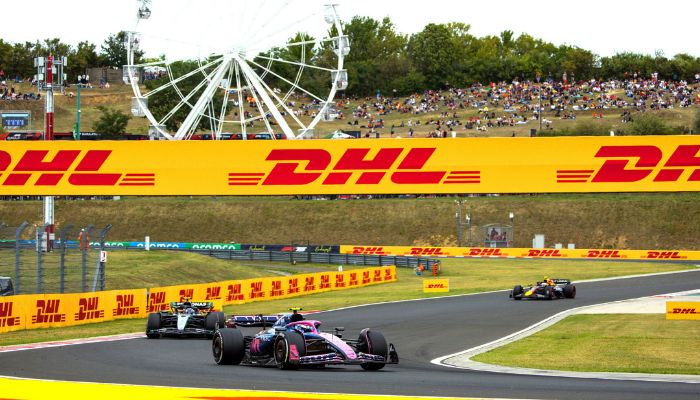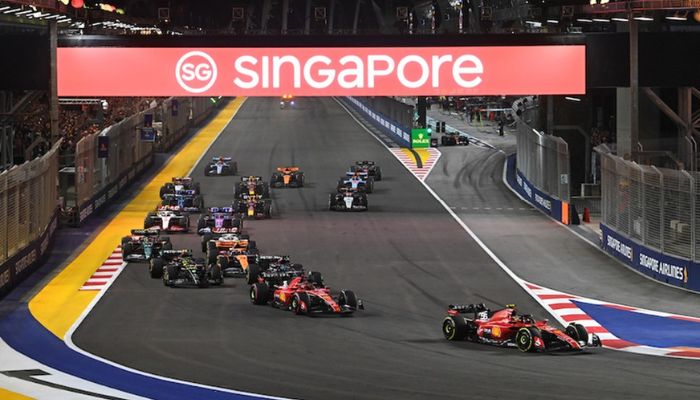Formula 1 has evolved from a niche motorsport into a global entertainment property with year-round cultural relevance. Audiences are no longer confined to the grandstands or weekend broadcasts; they follow the sport through streaming platforms and social media edits, behind-the-scenes documentaries and series, interactive apps, and social communities that operate on a regular cycle.
This shift has created a dynamic environment where fan expectations mirror those of mainstream entertainment and lifestyle brands: personalised content, seamless digital experiences, and opportunities for meaningful participation.
For marketers, the implications are significant. Traditional sponsorships—logo placements on cars and driver suits—still deliver visibility, but they represent only a fraction of the potential touchpoints. Brands are increasingly expected to add value to the fan journey, whether through immersive technology, exclusive storytelling, or collaborations that reflect the sport’s diversity of cultures and geographies.
With this year’s Formula 1 now headed to Singapore for the famed Singapore Grand Prix’s night racing, the race is on for advertisers and rights holders to move beyond transactional deals in order to create richer connections with Formula 1’s expanding audience.
Tapping into F1 fanbases’ “passionomics”
For Julie Nestor, executive vice president, marketing & communications, Asia Pacific at Mastercard, racing fans are a uniquely powerful audience, and that their passion runs deep, not just for teams and drivers, but for the entire ecosystem.
“What makes them especially compelling is how their engagement extends far beyond the track: only 1% of fans ever attend a race in person, yet the vast majority remain deeply engaged through broadcast and digital content, team partnerships, and immersive brand activations,” she remarked.
It is worth noting that Mastercard has been recently named the title sponsor of the McLaren Formula 1 ahead of the 2026 season, with Julie describing the partnership as allowing the financial services giant to connect with this always-on community through a year-round calendar of races and driver-led storytelling.
“Ultimately, this is about Passionomics—people spend on what they love. Racing fans don’t just watch; they engage, share, and buy from brands that fuel their passion. The sport’s energy, consistency, and unpredictability make it a powerful platform for building lasting brand loyalty,” she stated.

From a larger standpoint, meanwhile, Yung C. Ooi, senior vice president – commercial, Asia Pacific, at DHL Express describes the F1 fanbase as being more engaged through content, appealing to younger audiences, especially Gen Z and female fans.
“These newer fans engage with F1 content more frequently and are more emotionally invested, showing increased responsiveness to sponsors and a strong interest in behind-the-scenes storytelling,” they stated.
Speaking of being content-engaged, Stan Lim, chief creative and experience officer at Dentsu Creative Singapore, highlights how the popular Netflix series Drive to Survive heightened fan immersion and loyalty, evident with how fans are deeply engaged not only with F1’s drivers but also its teams.
“This passion translates into higher brand recall and willingness to consider sponsor products, making F1 a powerful platform for building lasting consumer loyalty. For brands, F1 is like a supercharged billboard of a world,” he said.
Meanwhile, Michelle Ong, group partnerships director at ICON1C, describes the typical F1 fan being both both deeply passionate and highly aspirational, far beyond race weekends alone but literally engaging year-round through content, watch parties, and various themed experiences.
“In Singapore especially, F1 has become such a landmark occasion where the entire city comes alive, locals and international guests alike fly in and seek ways to host, entertain and indulge. This creates fertile ground for long-term loyalty. For brands, the opportunity extends beyond just awareness but true affinity that aligns with a highly engaged community that aligns with excellence and cultural relevance,” she explained.
Striking the right balance on F1 engagements
For Maurizio Barbieri, sports marketing veteran and founder of TIFO, one of the biggest reasons of why F1 has been successful in tapping to new demographics is how its media holder, Liberty Media, fully embrace social media to get F1 to grow beyond the regular/ traditional exposure provided by the legacy media.
“What used to be only for the rich people (F1’s previous regime was famous for not wanting bums around the paddocks and at the tracks) now it is truly an experience for all fans at all time,” he said. With that in mind, he believes that luxury shouldn’t be the only option for brands in terms of fan engagement.
“I think it is not about the caviar and champagne… or at least not any longer. Now it is about giving your younger fans the opportunity to be closer to the action. That’s the real luxury-being able to feel like you are part of the team will make the experience more memorable,” he added.
Michelle of ICON1C also echoed a similar sentiment, adding that the key is getting plugged into curated or exclusive lifestyle experiences that extend beyond just the trackside and can elevate the brand association to a targeted audience. This means branding touchpoints that are creatively integrated for community engagement, paired with ultra-curated moments speak directly to VIPs, leaders and other KOLs.
“Premium hospitality is essential, but the real cut-through comes when brands are able to extend storytelling through exclusive entertainment and aligning with key lifestyle pillars,” she said.
Michelle also added, “The most successful activations are those that align with the city’s street-circuit buzz, while still delivering exclusive engagement and creative brand integration across these communities.”
Shifting demographics, shifting F1 marketing strategies
Given that many of F1’s new viewers are younger fans, DHL’s Yung Ooi noted that its long-standing partnership with F1 for over two decades has evolved to not only being its official logistics partner but also aiming at showcasing its partnership towards younger audiences with interactive campaigns and sustainable messaging.
“We are able to showcase our capabilities in transporting equipment and managing complex logistics live, thereby increasing brand visibility and appealing to diverse and influential target audiences across all generations, including global event attendees, potential customers, and younger segments of the audiences, or potential talent,” they explained.

A recent example of DHL’s interactive engagement was for ‘The World Premiere’ for the 2025 F1 The Movie in Times Square, with DHL delivering 13 Formula 1 cars to create a unique “red carpet” experience, including unveiling the film’s APEXGP car from a giant DHL box. The event generated global interest, transforming Times Square into a full-scale F1 experience that served as the launchpad for a record-breaking, highest-grossing sports film and a new benchmark in fan engagement and experiential marketing for the sport and the film industry.
Moreover, DHL also has other fan engagements, including guessing the ‘DHL Fastest Lap’ and ‘DHL Fastest Pit Stop’ in Formula 1 across the 2025 season for a chance to win prizes, as well as fans submitting their voiceover of a ‘DHL Fastest Lap’ sector from the Formula 1 Qatar Airways British Grand Prix 2025 to win a 2-day VIP experience for two at an F1 event in 2026.
Meanwhile, for Mastercard’s Julie, the brand has its Priceless platform—which blends prestige moments like paddock tours and meet-and-greets with inclusive activations that bring fans closer to the McLaren F1 Team action beyond the track.
“For Mastercard, using a mix of channels and formats allows us to reach McLaren Formula 1 Team fans where they are, rewarding their passion at every level, and ensuring the impact extends well beyond race weekend,” she added.
How to truly measure F1-related fan engagement
Michelle notes that rather than measuring purely by reach or impressions, brands should evaluate F1 fans through the lens of lifetime cultural and commercial value.
“This audience is globally mobile, affluent, and engaged across multiple lifestyle touchpoints—from luxury travel to gastronomy to curated entertainment. Their value comes from repeated participation across the race-week ecosystem,” she explained.
She further added, “For sponsorship, this shifts the focus toward investing in branded ecosystems and iconic hero events surrounding F1 too, which are experiences fans continually return to, delivering deeper ROI than a one-off visibility play.”
Dentsu Creative Singapore’s Stan also noted that by blending premium hospitality with bursts of urban energy, both high-net worth and broader audiences can enjoy these F1-related engagements.
“Fans demand authenticity, sustainability, and stories that mirror their values. With that, F1 has shifted towards culture, lifestyle, and tech innovation rather than just elite motorsport. Brands too will need to find a genuine moment and a voice they can own in the world of F1,” he stated.
From a more technical standpoint, Mastercard’s Julie stated that one clear way that brands can quantify value is through the breadth of payment touchpoints that they can weave their brand into throughout activation periods.
In Mastercard’s case, she stated, “Payments span tickets, merchandise, travel, F&B, and hospitality and that goes far beyond the three-day race weekend. Many fans travel internationally for races and often extend their stays beyond the live events.”
The continued evolution of luxury in F1
Beyond static sponsorships, Michelle notes that the definition of luxury in F1 is evolving, thanks to a continued demand from younger fans yearning for novel, celebratory and interactive experiences.
“Luxury is evolving from exclusivity for its own sake to curated, culturally relevant experiences that feel both premium and personal. In motorsport, this means moving beyond cluttered trackside activations and showing up in the lifestyle moments that define race week,” she said.
She concluded, “The future of luxury in F1 is also celebratory and social, blending the prestige of the race with world-class entertainment, gastronomy, and intimate gatherings of the right community. These cultural touchpoints are as iconic as the race itself, and brands that embrace this evolution (where luxury is about access, storytelling, and resonance) will be the ones that win.”
***
With this year’s F1 season nearing its conclusion and amid all of the season’s race dramas and action, the true meaning of fan engagement related to F1 isn’t just limited to your brand being a proud display in an F1 team’s car livery or team kit. Instead, F1 fan engagement is all about making fans feel closer to the action in the circuit or with an F1 team’s inner workings and experience. After all, with most of F1 fans are glued to their screens to follow the latest in F1, it is imperative for brands to not only bolster its offline engagement with high-end fans but also with the broader audience through online experiences and content engagement.
